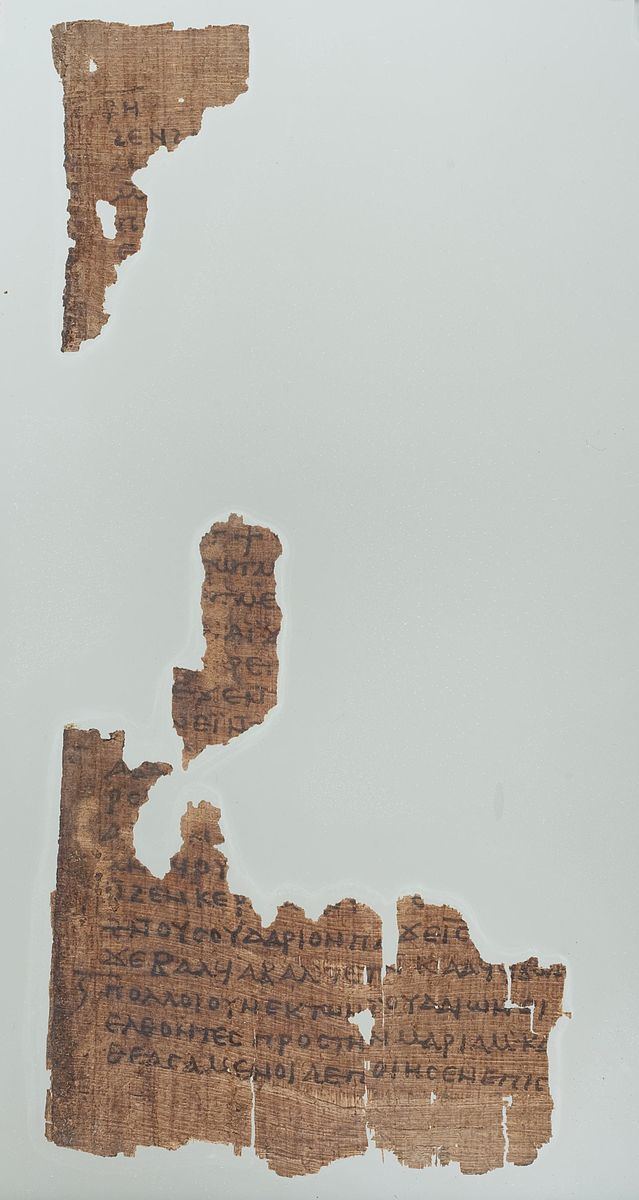Order in the Bible part 4 | ||
 | ||
John 11 is the eleventh chapter of the Gospel of John in the New Testament of the Christian Bible. It records the raising of Lazarus from the dead, a miracle of Jesus Christ and subsequent development of the plot against Jesus. The book containing this chapter is anonymous, but early Christian tradition uniformly affirmed that John composed this Gospel.
Contents
Text
Places
Events recorded in this chapter refer to the following locations:
Structure
The New King James Version organises this chapter as follows:
Lazarus of Bethany
Now a certain man was sick, Lazarus of Bethany, the town of Mary and her sister Martha. (New King James Version)Chapter 10 ended with Jesus leaving Jerusalem as the Jews threatened to stone him, and travelling to the east of the river Jordan. The evangelist's introduction of Lazarus of Bethany at this point (John 11:1) leads to the discussion of whether Jesus should return to Judea (Jerusalem) in the face of the growing plot against Him. Mary and her sister Martha appear to have been better known than their brother Lazarus, as he is introduced by reference to them. Theologian Joseph Benson therefore suggests that "It is probable [that] Lazarus was younger than his sisters". The sisters send messengers to Jesus, so his location cannot have been entirely secret, "firmly expect[ing] that he, who had cured so many strangers, would willingly come and give health to one whom he so tenderly loved". The words of their message made reference only to Lazarus' sickness, leaving unexpressed "(but ... to be inferred) the consequent, therefore come to our help" Bengel notes that John often expects the reader to make such inferences, such as in John 2:3: "When they wanted wine, the mother of Jesus saith unto Him, 'They have no wine' [leaving the consequent unexpressed, but implied, Do Thou relieve them]". Commentators generally understand that the sisters expected Jesus would come to Bethany despite the personal danger to Himself, with which His disciples were more concerned (John 11:8), although Exclusive Brethren theologian John Nelson Darby notes that "He might have said the word, as in the case of the centurion, and of the sick child at the beginning of this Gospel (John 4:46-53)".
Twelve hours in the day
In reply to the disciples' concerns about Jesus returning to Judea, where very recently (Greek: νῦν), 'just now' (English Standard Version) or 'lately' (New King James Version) the Jews had wanted to stone Him, He answered:
Are there not twelve hours in the day? If anyone walks in the day, he does not stumble, because he sees the light of this world. But if one walks in the night, he stumbles, because the light is not in him.” (John 11:9-10, NKJV)The νῦν shows that they had not been long in Peraea on the east of the Jordan. The Jews divided the day from sunrise to sunset into twelve equal parts". Heinrich Meyer suggests that "the sense of the allegorical answer is this: 'The time appointed to me by God for working is not yet elapsed; as long as it lasts, no one can do anything to me; but when it shall have come to an end, I shall fall into the hands of my enemies, like him who walketh in the night, and who stumbleth, because he is without light'. In this way Jesus sets aside the anxiety of His disciples, on the one hand, by directing their attention to the fact that, as His time is not yet expired, He is safe from the apprehended dangers; and, on the other, by reminding them (John 11:10) that He must make use of the time apportioned to Him, before it come to an end".
Location of Bethany
The evangelist tells his readers where Bethany is in relation to Jerusalem:
Now Bethany was nigh unto Jerusalem, about fifteen furlongs off (King James Version)15 furlongs or (Greek: 15 stadia) is about 2 miles. Some translations say "not quite two miles".
Verse 25
New King James Version
Jesus said to her (Martha), “I am the resurrection and the life. He who believes in Me, though he may die, he shall live.”Verse 26
New King James Version
[Jesus said to Martha:] “And whoever lives and believes in Me shall never die. Do you believe this?”Verse 35
New King James Version
Jesus wept.